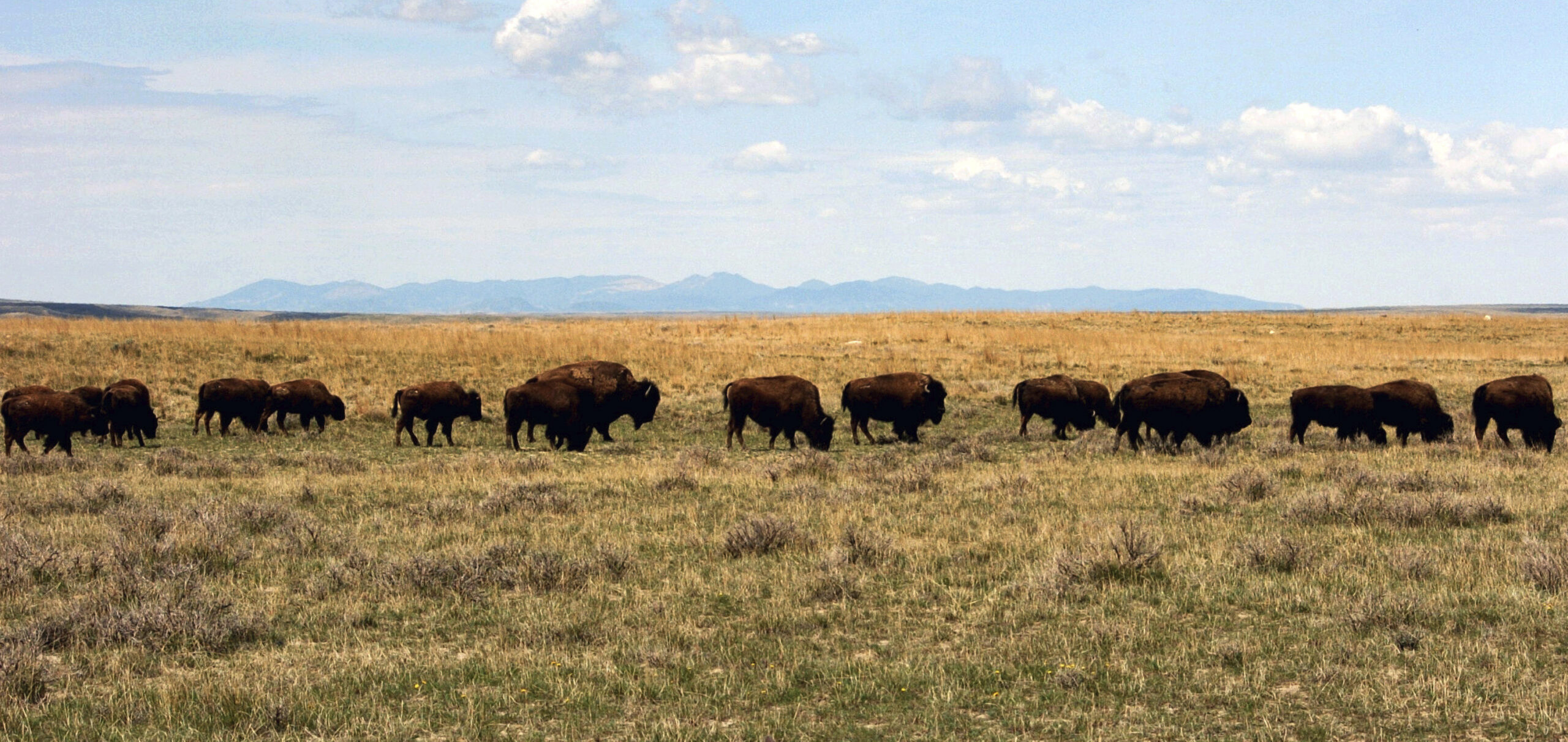COMMENTARY BY DR. DAVE SAMUEL
Two hundred years ago, 60 million bison were roaming the grasslands of our country, but by the late 1890s, there were only 541 remaining. The reasons were commercial hunting and diseases from domestic cattle.
Because of several restoration efforts, there are now about 500,000 bison currently on private lands, and around 30,000 on public lands which include environmental and government preserves. Roughly 15,000 bison are considered wild, free-range bison not primarily confined by fencing.
In recent times, there have been efforts to return free-range bison to Montana, but it hasn’t been easy. Ranchers control a lot of free range in Montana, and they have concerns about competition with cattle and cattle getting diseases from bison. For 10 years, the wildlife agency in Montana worked with citizens to create a plan to effectively guide decisions on reintroducing bison to free-range. The plan specified how the game agency would work with local interests to conduct environmental and economic assessments required by Montana laws to inform a final decision by the Fish and Wildlife Commission regarding any proposal from other parties.
The plan did not include proposed reintroduction and it was adopted on January 7, 2020. One might think that even though there was no proposed reintroduction in the plan, it would be a major step in getting more bison on free-range lands in Montana. Not so. Ranchers were opposed to anything that even looked like it might lead to bison restoration. So they filed a lawsuit and were represented against Montana Fish, Wildlife and Parks by the United Property Owners of Montana. The suit was filed right after the plan was adopted in early January 2020. However, the court sat on it until the new government came into office in January 2021. I guess that is no surprise.
On March 22, 2021, a settlement was reached between the two parties that would void the 2020 bison management plan. The settlement stipulated that the wildlife agency would not try to move ahead with a similar planning process for 10 years unless bison were listed as a threatened or endangered species, which they are not. The new governor called the 10-year moratorium a cooling-off period. Sounds like the free-range bison approach was dead. Well, not quite because the legislature got involved.
In April 2021 the Montana legislature approved a bill that gave county commissioners authority to approve or deny any future proposal to move bison into their county. All the while hunting and conservation groups such as the Montana Wildlife Federation want to see more bison restoration and were disappointed that there was now a 10-yeara moratorium. They also didn’t like the fact that each county could make decisions on its own after the moratorium ended.
Native American tribes want bison restored on their tribal lands, and their private lands. They are part of a group trying to establish bison on the 3.5 million-acre Charles Russell National Wildlife Refuge in eastern Montana. The Blackfeet Nation in northwest Montana just east of Glacier National Park is also trying to establish a free-range herd.
There are other tribes involved with expanding existing herds on Ft. Belknap and Ft. Peck Reservations. In all cases, the tribes have approached the Biden administration for help. Three weeks ago, the U.S. Fish and Wildlife Service announced they were developing a multi-year planning process to consider putting bison on the Charles Russell National Wildlife Refuge.
Go back and reread this and make a list of all the stakeholders involved in this restoration effort. Like I said, restoring free-range bison to Montana isn’t as easy as one might think.




